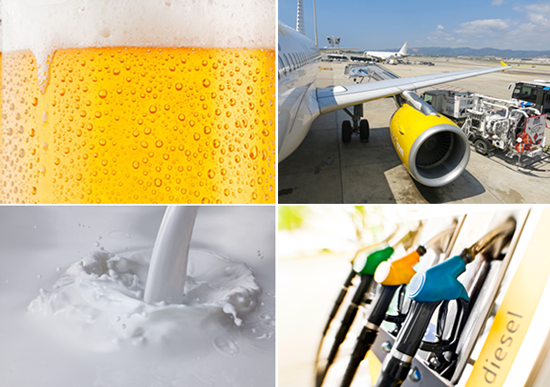New international standard for dynamic liquid measuring systems

When measuring large volumes of relatively expensive liquids such as gasoline, beer, and milk, even small inaccuracies can mean large losses for companies and consumers. Now, dynamic measurements of these and other non-water liquids are addressed under a new international standard, thanks to the efforts of a multi-national technical committee led by NIST's Office of Weights and Measures (OWM).
With the publication of its final two sections in April 2015, International Recommendation OIML R 117,"Dynamic measuring systems for liquids other than water," is now considered the official international standard for almost all dynamic liquid measuring systems, which include those used for fuel dispensers, oil pipelines, ship loading, aircraft fueling, and liquid foods such as juice and vegetable oil. The Recommendation is issued by the International Organization of Legal Metrology (OIML), an international standard-setting body with 60 member states, including most first-world and second-world countries.
Previously, individual countries often had their own standards for regulating measurement systems for non-water liquids, says OWM's Ralph Richter, who served in two leadership roles as both the Convener of the International Project Group and the Co-Secretariat of the OIML Technical Committee. This previous arrangement often required that manufacturers that produced a measurement system or a system component had to get a separate certification in each country in which they hoped to sell their products.
OIML R 117 makes it possible for manufacturers to have their measuring systems or components tested only once at any of a number of authorized National Measurement Institutes (NMIs) around the world.
"Hopefully this will make things easier for everyone," Richter says. "The ultimate long-term objective for us is that there's one standard that's recognized everywhere and one test that's done by a recognized testing authority, which is accepted everywhere so that the manufacturer can sell their product everywhere."
Though it is only a few weeks old, international test labs have already begun issuing certificates based on this new standard, he continues.
Dynamic measurement refers to assessments of volume or mass made during bulk transfer, such as when liquids are pumped from one container to another, often for transport. The systems and components whose performance is tested under the new standard can include flow meters, electronic calculators, sensors, transducers, and more. Measuring systems for water and measuring systems for cryogenic liquids are not included in this standard because they are covered by other OIML recommendations.
The first part of OIML R 117, published in 2008, specified the requirements for systems covered by this new international standard. The two recently published parts contain detailed procedures and a checklist for testing the performance of dynamic liquid measurement systems and components. Altogether, the standard is almost 500 pages long.
OIML R 117's authors – members of a technical committee with representatives from 27 countries including experts from NMIs, academia, testing labs, and industry – spent more than five years drafting the two new parts. In developing this standard, the group had to address challenges associated with measuring some of the non-water liquids, such as measuring liquids that have a tendency to foam, which significantly complicates volume measurements.
The new sections achieved 100% international consensus from the committee – a rare achievement for a document of this complexity, Richter says.
"It was developed under a consensus process, but the choice of whether to adopt this standard is still voluntary for each country," Richter says. "So there could still be some country that says, 'Okay, we recognize you have an OIML certificate, but we still want additional testing done.'"
In the coming months, the international project group led by Richter is working to develop several new sections to their document, including a section on dynamic measurements of liquefied natural gas (LNG), a relatively cheap and clean-burning alternative to diesel fuel. Transportation and measurements of LNG are tricky because of the cooling required to keep the fuel cold enough to remain a liquid.
More information: The full text of OIML R 117 can be accessed here:
Part 1: www.oiml.org/en/files/pdf_r/r117-1-e07.pdf
Provided by National Institute of Standards and Technology



















